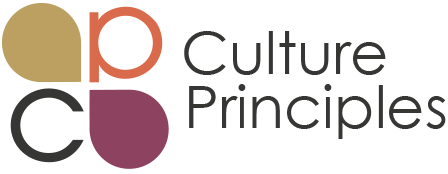
Have you ever considered how our words shape our understanding of DEI? Let me take you back a few years. I was in a meeting discussing a new DEI initiative. Someone mentioned the term “allyship,” and a lively conversation ensued. Some saw it as a call to action, a commitment to support marginalized groups. Others felt it was a buzzword that had lost its meaning. This moment was a reminder of how the landscape of language is constantly shifting. Terms we use today might carry a different weight or understanding tomorrow.
In the workplace, words are not just placeholders—they are powerful tools that can build bridges or erect barriers. Those engaged in DEI initiatives widely understand that strong policies are critical in guiding organizations toward more equitable practices, but the language within these policies can profoundly influence their effectiveness and perception. Today, we are exploring how specific terminologies in DEI policies can foster inclusivity or, conversely, perpetuate exclusion.
Are we genuinely communicating effectively with the language we use? Let’s dive in and find out.
Understanding the Impact of Language in DEI Initiatives
The cornerstone of any DEI initiative is its language. Terms like ‘diversity,’ ‘equity,’ and ‘inclusion’ carry weight and imply specific actions and commitments. However, if these terms are not carefully defined and contextually anchored within policies, they risk being misunderstood or dismissed as mere corporate rhetoric.
Despite the tremendous efforts made over the last few years to bring people up to speed, terms continue to be confusing. For example, during a workshop, the term ‘inclusion’ led to an impromptu conversation. With a tongue-in-cheek remark, one participant asked, “Does this mean we need to invite everyone to every meeting?” This comment opened the doors for a much more robust discussion where multiple ideas of inclusion could be explored. Ultimately, this conversation led the team to define what inclusion would mean in their organization, highlighting the need for clear definitions and explanations within our DEI policies. Language in DEI policies sets the tone for organizational culture and affects how employees perceive and engage with DEI efforts.
How do you define ‘diversity,’ ‘equity,’ and ‘inclusion’ in your organization?
Common Linguistic Pitfalls in DEI Policies
One major pitfall in DEI policies is vague language that offers no clear direction or measurable goals. Phrases like “we value diversity” are well-meaning but fail to specify what that value looks like. For instance, specifying that diversity means increasing the representation of women in leadership roles by 20% over the next three years provides a clear and measurable goal. Similarly, jargon and corporate speak can alienate those unfamiliar with such terms, effectively excluding them from the conversation.
Have you ever felt excluded by jargon or unclear language in DEI initiatives? Many of us have at one point or another. Even well-meaning terms meant to be inclusive can leave others feeling unseen. For example, the term ‘BIPOC’ (Black, Indigenous, and People of Color), while applicable in certain contexts, may not be universally understood and can lead to misunderstandings about who is included within these groups.
Moreover, a significant issue is how the term ‘diversity’ itself is often used. My pet peeve is that we sometimes use ‘diversity’ to further the othering of groups. Diversity should refer to the collective of all people, yet it often gets interpreted to mean nonwhite, non-cisgender, non-able-bodied individuals. This misinterpretation can inadvertently reinforce stereotypes and exclusions rather than foster more inclusive environments.
To avoid these pitfalls, organizations must clearly define their DEI terms and outline concrete actions that demonstrate their commitment to these values. As companies operate with a business or strategic plan, DEI actions should articulate goals, project owners, and metrics that help guide the business. For example, tracking metrics such as employee retention rates, promotion rates among underrepresented groups, and employee satisfaction surveys can provide tangible evidence of progress.
Without specific, actionable steps and a structured plan, even the most inspiring DEI statements can fail to make a meaningful impact. By establishing clear objectives, assigning responsibility, and tracking progress, organizations can ensure their DEI initiatives are not only well-intentioned but also effectively implemented and sustained. This approach demonstrates a commitment to DEI and allows for observable changes in the organization’s metrics and behaviors, creating a more inclusive and equitable workplace for all.
Language is a powerful tool in shaping DEI policies and fostering an inclusive workplace. We can ensure that our DEI initiatives are clear, inclusive, and effective by paying careful attention to our words. It’s crucial to define terms clearly, avoid vague language, and remain sensitive to the evolving nature of DEI terminology. By doing so, we can build a more inclusive and equitable workplace for everyone.
In the next article in this two-part series, we will explore practical principles for crafting inclusive DEI language and navigate the complexities of using potentially polarizing DEI terms. Stay tuned for insights on making your DEI initiatives more inclusive and impactful by focusing on your DEI language.
